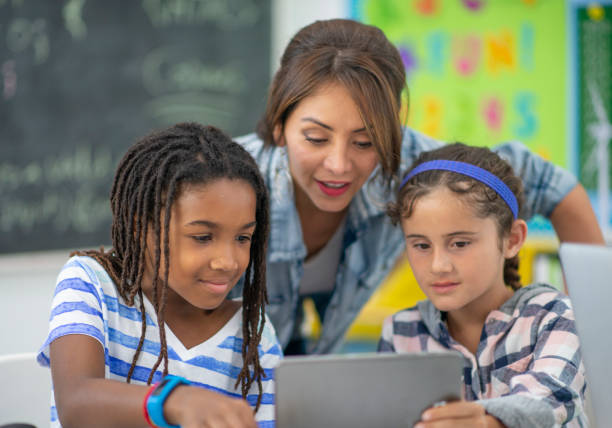(ThyBlackMan.com) Have you ever wondered why today’s kids learn so differently from how we did just a decade ago? Classrooms are changing, and so are children. Their needs, learning styles, and emotional development are evolving faster than many schools can keep up. Young learners today are growing up in a world full of technology, fast-paced communication, and shifting family dynamics. As a result, their educational needs are not what they used to be.
In this blog, we will share the many ways young learners are evolving and how educators, parents, and caregivers can meet their growing needs.

The Role of Emotional Intelligence in Learning
Young learners today face more emotional pressure than in previous generations. With increased exposure to media, changing family systems, and rising academic expectations, emotional development has become just as important as cognitive learning. Schools that once focused mainly on academics now find themselves addressing social and emotional growth as a core part of their teaching goals. Kids who understand and manage their emotions tend to perform better in school, form stronger relationships, and deal with stress more effectively.
Building emotional intelligence in the classroom means helping kids recognize their feelings, build empathy, and practice self-regulation. Teachers can do this through group activities, open conversations, and modeling calm behavior. Parents can support this at home by listening without judgment and encouraging kids to talk about their experiences.
How Technology Shapes Attention and Learning Styles
Screens are everywhere, and kids start using digital devices from a very young age. This exposure shapes how they take in information, learn new skills, and even how long they can stay focused. Many young learners today prefer visuals, interactive games, and quick feedback. Traditional teaching methods often don’t engage them the same way, which means classrooms must evolve to keep students interested and involved in learning.
These changes have also led to a growing need for educators to study and understand childhood development deeply. Earning a master’s in child development online has become a flexible way for teachers and professionals to learn how young minds grow in today’s world. One excellent program is the Master of Education in Curriculum & Instruction – Early Childhood Education from Southeastern Oklahoma State University. This fully online program helps educators explore how young children learn and develop while gaining practical tools to apply in the classroom. With this knowledge, educators can adapt their teaching methods, connect with students more effectively, and make informed decisions about technology use.
Building Curiosity Through Play and Exploration
Play is not just a break from learning—it is learning. Kids use play to make sense of the world, build language, solve problems, and express creativity. Over time, some schools have reduced playtime to make room for more structured lessons, but this can actually hurt a child’s overall development. When kids have time to play freely, they develop curiosity, confidence, and communication skills that support learning across all subjects.
Exploratory learning allows students to take charge of what they’re learning. When teachers ask open-ended questions or provide hands-on materials, students begin to experiment, ask questions, and think more critically. Encouraging kids to be curious, rather than just giving them answers, helps them stay engaged. Whether it’s through science kits, art supplies, or group storytelling, giving young learners the space to play and explore can unlock deeper understanding and long-term interest in learning.
Supporting Mental Health from an Early Age
Many children today struggle with anxiety, attention challenges, or emotional distress. These issues often show up in the classroom through behavior changes, lack of focus, or social withdrawal. Addressing mental health early helps young learners build resilience and get the support they need before problems grow. Schools that provide counselors, mindfulness programs, or regular emotional check-ins help kids learn how to cope with challenges in healthy ways.
Parents and caregivers also play a key role. Creating routines, offering a safe space to talk, and seeking help from professionals when needed can all support a child’s mental health. It’s important to remember that learning can’t happen when a child doesn’t feel emotionally safe. When schools and families work together to support mental well-being, students are more likely to succeed both in and out of the classroom.
In conclusion, meeting the evolving needs of young learners means paying attention to who they are, how they think, and what they need to grow. It’s about supporting emotional development, honoring diversity, and adapting classrooms to be more engaging and inclusive. These efforts don’t just help students succeed academically—they help them feel understood and confident in who they are. As parents, teachers, and communities, we all play a role in shaping the next generation of learners. When we listen to their needs and respond with care, we create a stronger path forward for every child.
Staff Writer; Lou Jones
















Leave a Reply